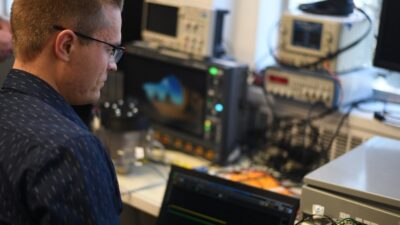The biggest applications—like the biggest shows—need the best rehearsals. Building the largest dredger on earth is a titanic event, but automating the vessel until it needs only a 40-person crew compounds the challenge. Using software to simulate and test crucial control systems can help such enormous projects succeed and cut costs.
The biggest applications—like the biggest shows—need the best rehearsals. Building the largest dredger on earth is a titanic event, but automating the vessel until it needs only a 40-person crew compounds the challenge. Using software to simulate and test crucial control systems can help such enormous projects succeed and cut costs.
The Netherlands now provides 80% of the world’s dredging capacity, but that percentage is likely to increase because Royal Boskalis N.V. (Westminster, U.K.) recently launched the W.D. Fairway. Built by Verome Shipyard B.V. (Heusden, the Netherlands), the world’s biggest dredger is 173 m long, 32 m wide, weighs 33,500 tons, and has a hopper capacity of 23,400m3.
To create the Fairway’s integrated monitoring and control (IMC) system, Boskalis and Verome chose GTi Industrie B.V. (Rotterdam, the Netherlands). The dredger’s IMC automates the entire vessel, including its engine room, bridge, hopper, suction pipes, as well as the vessel’s dynamic positions. Final design included seven Omron PLCs with 2,400 I/O devices including 25% analog signals, 10 supervisory control and data acquisition (SCADA)/human-machine interface (HMI) monitoring stations with Fast/Tools, two SCADA servers with database functionality, redundant glassfiber networks, Modbus networks, and Boka Net for dynamic positioning and pipe positioning.
Simulation and testing
To test and deliver an IMC that met quality standards and maintained the Fairway’s safety at sea, GTi project leaders Bas Bickel and Marcel van Dijk worked with ATS (Haarlem, the Netherlands). ATS suggested using Programmable Industrial Control Simulation (PICS) from SST (Waterloo, Ontario, Canada), which allowed GTi to simulate and debug the IMC on dry land using software instead of building a massive hard-wired testing system.
GTi’s 20-engineer team wrote the ICM’s PLC and SCADA programs, while PICS was used to write simulation software. All control panel drawings were copied into the PICS software, which created on-screen images of each panel and simulated their I/O operations behind each operator interface. The dredger was now replicated by PICS on a standalone PC that could send and receive signals as if the ship was in the North Sea completing a pipeline project. By simulating the Fairway’s I/O devices, the PLC programs could be fully tested and debugged in preparation for the vessel’s actual sea trials. Once the software passed its factory acceptance testing and GTi’s ISO 9000 tests, the IMC’s PLC and SCADA programs were installed on the real dredger. PICS was also used to train the Fairway’s crews.
PICS allowed the Fairway’s sea trials to proceed with a bug-free IMC, and helped Mr. Bickel and Mr. van Dijk meet their ISO 9000 quality standards. The dredger completed its sea trials in just two weeks in June 1997 without a single software error being detected. Mr. Bickel and Mr. van Dijk say PICS improved the success rate of the sea trials, which slashed overall project costs. They add that GTi is already working on another dredger that will use PICS in its IMC system.
For more information, visit www.controleng.com/info .


